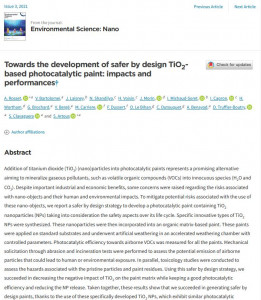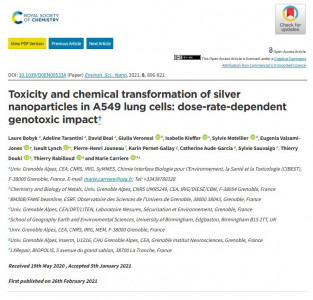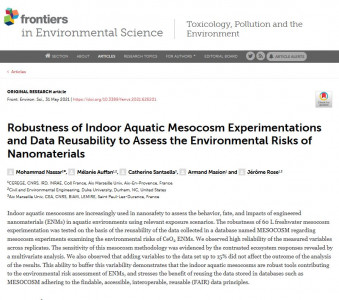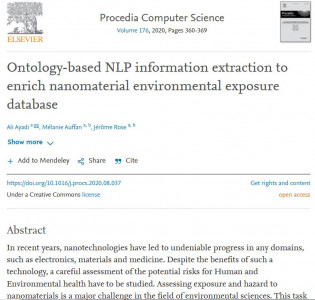Emilie Brun et al. have recently published a paper in Particule and Fibre Toxicology.
The study investigated the Titanium dioxide nanoparticle impact and translocation through ex vivo, in vivo and in vivo gut epithelia"
Abstract
Background
TiO2 particles are commonly used as dietary supplements and may contain up to 36% of nano-sized particles (TiO2-NPs). Still impact and translocation of NPs through the gut epithelium is poorly documented.
Results
We show that, in vivo and ex vivo, agglomerates of TiO2-NPs cross both the regular ileum epithelium and the follicle-associated epithelium (FAE) and alter the paracellular permeability of the ileum and colon epithelia. In vitro, they accumulate in M-cells and mucus-secreting cells, much less in enterocytes. They do not cause overt cytotoxicity or apoptosis. They translocate through a model of FAE only, but induce tight junctions remodeling in the regular ileum epithelium, which is a sign of integrity alteration and suggests paracellular passage of NPs. Finally we prove that TiO2-NPs do not dissolve when sequestered up to 24 h in gut cells.
Conclusions
Taken together these data prove that TiO2-NPs would possibly translocate through both the regular epithelium lining the ileum and through Peyer's patches, would induce epithelium impairment, and would persist in gut cells where they would possibly induce chronic damage.
Keywords : Titanium dioxide ; Nanoparticle ; Ingestion ; Translocation ; Dissolution ; Accumulation ; Gut ; Toxicity ; M-cells ; Paracellular

Micro-XRF observation of TiO2-NP accumulation and impact ex vivo and in vivo. In the in vivo experiment, mice were exposed to a single gavage of 12.5 mg/kg TiO2-NPs and sacrified 6 h after the gavage (in vivo) ; ex vivo explants were exposed for 2 h to 50 μg/mL of TiO2-NPs. Micro-XRF images of cross sections of the gut from the in vivo (A, in vivo) and the ex vivo (A, ex vivo) experiments. Green : phosphorous (P) distribution map and red : titanium (Ti) distribution map. Ti-rich zones are pointed out with arrows. PIXE images of a cross section of the gut from the in vivo experiment (B). Phosphorous (P) and titanium (Ti) distribution maps, with their colour scale. Lymphoid nodule (n.), villi (v.), submucosa (sm.), muscularis externa (me.), lumen (l.). Paracellular permability probed by measurement of FITC-Dextran 4 kDa flux through mouse gut in vivo (C) and through ex vivo explants of the ileum, Peyer's patches (pp.) and colon (D). Average of eight replicates ± standard error of the mean. Results were considered statistically significant (**) when p
Brun et al. Particle and Fibre Toxicology 2014 11:13 doi:10.1186/1743-8977-11-13









